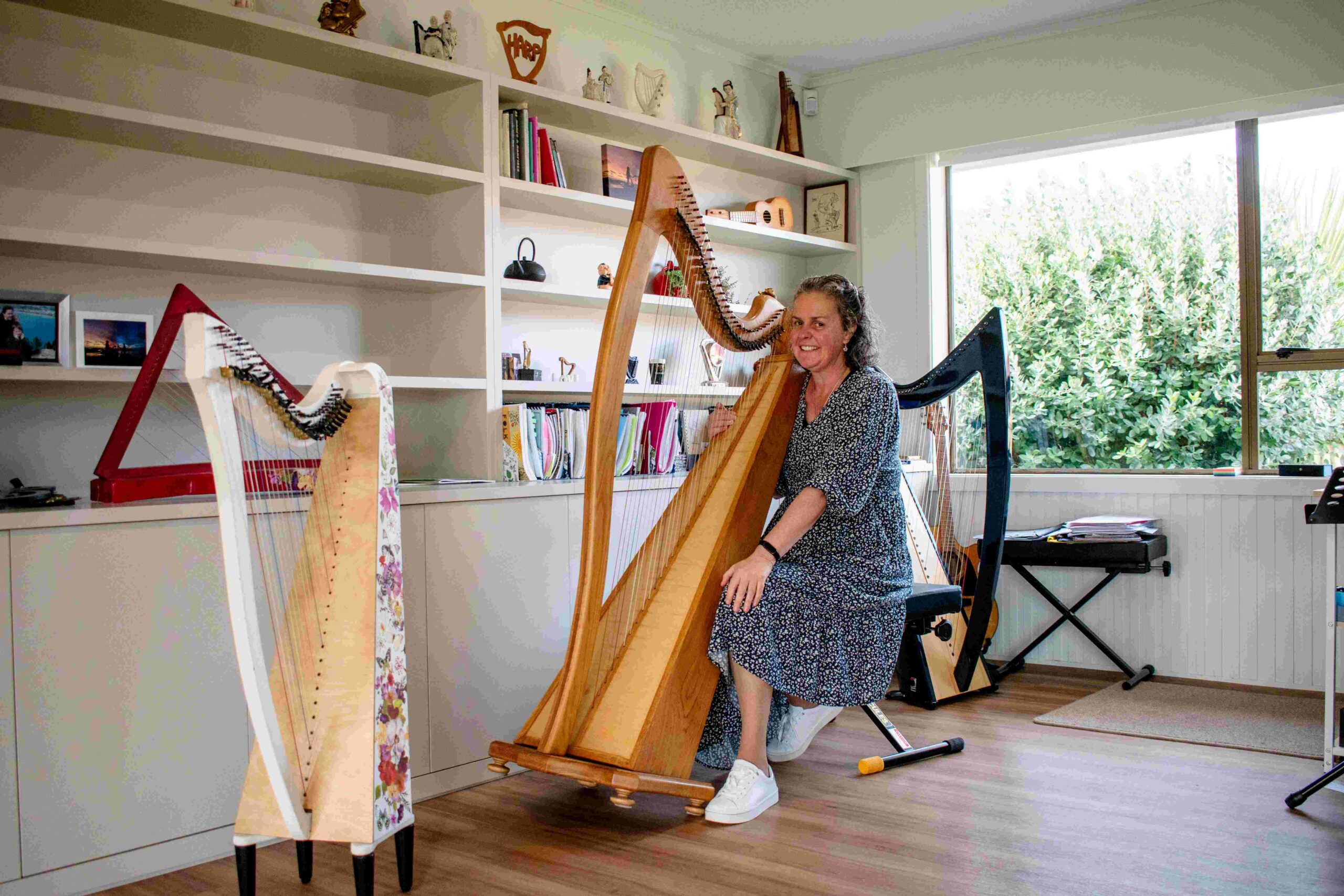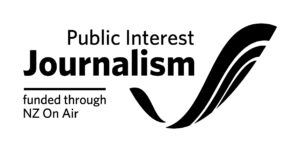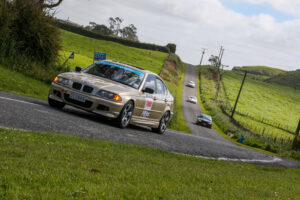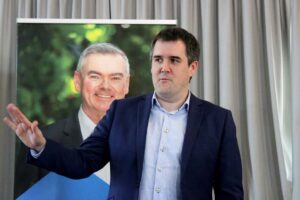When Anna Dunwoodie asks the question, “Have you ever played a harp before?”, the answer is almost always, “No, but I’ve always wanted to”. It’s an instrument that appeals to the romance in the soul, conjuring images of frolicking nymphs or intimate Victorian waltzes.
Anna, a professional musician, fell in love with the instrument at the age of 10. Now, she seizes any opportunity to share that passion with others.
Upon my arrival at Anna’s studio in Thames, I find myself enveloped by that same enthusiasm as I am swiftly seated behind a wooden lever harp, almost as tall as I am, for an introductory lesson.
Instrument nestled against my shoulder, Anna takes me through basic hand positions – “thumb goes there, and use your second finger to go up,” – and we are away.
Coming from a musical background, it’s easy enough to follow along with a rendition of Frère Jacques and a simple Celtic folk tune. Straight-forward notes, but they are soothing and melodic. That’s where the appeal of the harp lies, Anna says.
“It’s actually really easy to make a really pleasant sound – there’s no bum notes on the harp,” she says.
“I think it takes away a degree of the inaccessibility when people can actually make a great sound on it straight away.”
Between chords, we talk music. Anna is heading to New Jersey, USA in July – she’s been invited to the Somerset Folk Harp Festival, a massive gathering of harpists from across the world.
“I’m teaching four workshops. One’s called Kiwi Celt Tunes, so I’m teaching them things like the Wellerman and Pokarekareana… And then another one I’m doing is called I Hate Sight Reading,” she says.
She’s also running a workshop on memorising music, and a session called “Rounds”, with participants getting the chance to try each others’ instruments in a relaxed setting.

While the four-day festival is a great opportunity for professional development, Anna is also excited about the networking opportunities. She’s been instrumental in the revival of the harp in New Zealand, she says, and she’s keen to keep up the momentum.
“There’s probably going to be, I don’t know, four or five hundred harpists there – all the top names and teachers and performers coming from all around the world,” she says.
“We had our first New Zealand harp festival at the start of 2023 – I was the artistic director for that. I’d been watching overseas for years and going, I’d love to have a festival here.
“The silver lining of Covid was that all the overseas harpists that I’d connected with over the years [were] suddenly saying, we want to come to New Zealand. And we got 12 international harpists out here.”
Now she’s working on planning for Harpfest 2026, but meanwhile Anna’s finding other ways to bring harp music to the people. One of her favourite ways is through school visits.
“It’s great to get in there and just let kids play them,” Anna says.
“Some teachers look at me in horror when I rock in with like seven or eight little harps. I always say to them, the most challenging kid in your class would be the one who sits at the harp, and you just see them drift off. They get the sort of seven-mile stare as they’re playing. I’ve seen that for years… I suspect it’s to do with the vibrations, and the fact that you’ve put an expensive instrument in their hands, and trusted them with it. That’s quite empowering.
“Sometimes the pretty little girls in the classroom start singing with it, too… they’ll be happily singing away, and I think, oh, my God, girl, hold on to that. You need confidence to sing and play.”
My confidence is building too. By the end of the lesson I’ve learnt the folk tunes and produced some passable chords and glissandos. But my beginning fumbles pale against the soft music that accompanies me as I leave, a taste of what a skilled performer can coax from the instrument.





